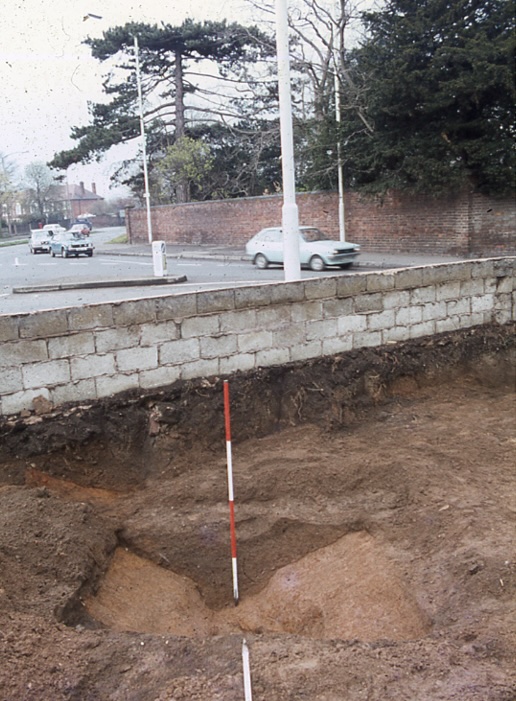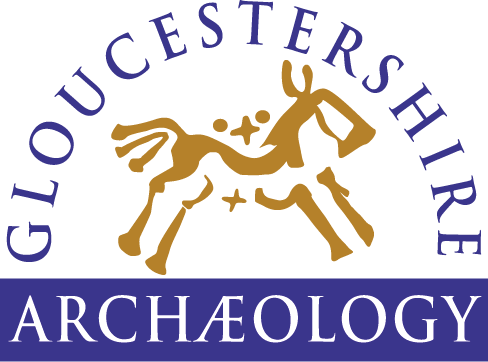Kingsholm Legacy Project
The Kingsholm Legacy Project encompasses historic excavations at Gambier Parry Gardens, Sandhurst Road and Other Sites in the Kingsholm area.
The Kingsholm Legacy Project.
Today, under planning permission regulations (PPG17), the developer must pay for an investigation ahead of destruction or preservation of a possible archaeologically sensitive site. Finance is included for the writing up of the results for dissemination through journals or books. Previously, much archaeological work was funded the Ministry of Works, (now the Department of the Environment) if the site was already known to be significant or it was discovered to be of importance through a watching brief or observing the on-going work. The funding for publication was a separate issue. During the 1970s and 80s there was much commercial growth in Gloucester and area and the City Archaeological Unit was established to monitor and investigated these on-going developments. It was under great pressure moving from threatened site to threatened site. There was little or no funding (or time) for writing up fully the results of the discoveries. A. P. Garrod who had been appointed as Field Archaeologist wrote with C.M Heighway,’ Garrod’s Gloucester’ (Western Archaeological Trust:1985) where the summaries of the work carried out in the City and Kingsholm from1974-81 were assembled. It also had a catalogue of archaeological sites in the Gloucester district before 1973 pushing the Kingsholm archaeological ‘timeline’ back to 1938. Volunteers contributed greatly on excavations, and this is recognised by Garrod in his dedication of the volume to GADARG, the forerunner of GlosArch. The Unit used Glevensis and the Transactions of the Bristol and Gloucestershire Archaeological Society to publish annual reports of its work. However, it was in Glevensis that the interim reports of individual sites were published. In 1985 Henry Hurst produced ‘Kingsholm’ (Gloucester Archaeological Reports Vol I: Gloucester Archaeological Publications: Gloucester) detailing the results of his 1972 excavations at Kingsholm Close (44/72), as well as from of 72, Dean’s Way (81/73) and St Mark Street (10/72), but since there has been no fully reported project under the old system.
There was a proposal to produce ‘Kingsholm II’ with the sites since Hurst’s volume as a series of reports in a large-scale printed monographs to be published by 2005. However, this never appeared. Because many, though not all, of the plans and reports from these Kingsholm later watching briefs and excavations survive in the Museum archive, members of GlosArch, with the encouragement and advice from Andrew Armstrong, the present City Archaeologist’ have collated them site by site. This initiative, ‘The Kingsholm Legacy Project’ forms an on-line resource for researchers of the Roman military and later development of the area. It is structured as the proposed Kingsholm II: The Northern Extra-Mural Area, The Northern Defences, The Fortress, the Southern Defence, and the Southern Extra Mural Area. Two sites designated as being in the ‘Northern Extra Mural area’ have been published: Sandhurst Lane (9/84: Glevensis, Volume 54) and Gambier Parry Gardens (9/83: Glevensis, Volume 56. If enough surviving records are available as investigated by Cotswold Archaeology’s ‘Gloucester City Excavation Archive: Enhancement Project’ (GCEAEP) reports others will follow. Even if it is not possible to publish the excavation in full some of the records such as those of the pottery type and distribution or the state of human remains will be available and invaluable to researchers working in those fields.
Also included in the project are recent excavation reports such as Denmark Road (Cotswold Archaeology, 2019) and 2, St. Oswald’s Road (Cursus Archaeology, 2023). However, with the commercialization of archaeology much has been reported as ‘grey literature’ and will take much research to access. Besides this on-going work and further research into Kingsholm’s archaeological past pre-1974 will also be undertaken beginning with those sites reported by Garrod.
Tim Copeland and Phil Cox

Kingsholm Legacy Project Excavation Archive
